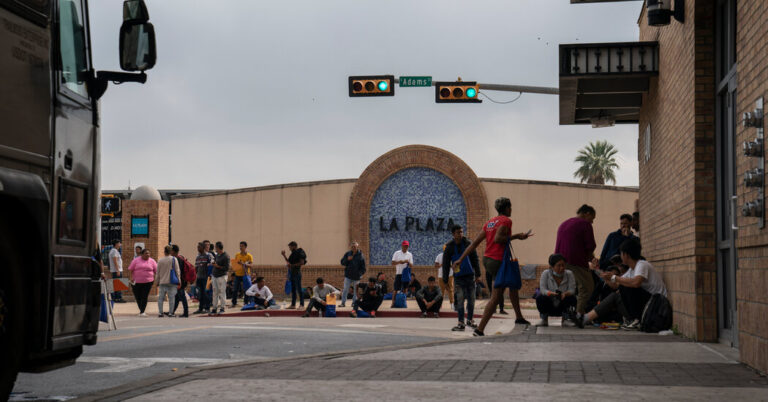
[ad_1]
Every day, thousands of migrants cross the southern border of the United States illegally. Fleeing violence, authoritarian states and extreme poverty, they brave the dangerous journey in the hope that once they cross into the United States, they can stay.
Over the past few years, illegal border crossings have been historically high — part of what the United Nations identified as a global migration trend. But U.S. officials expect the numbers to grow even higher at the southern border in the coming days because a pandemic-era health rule, called Title 42, will no longer be in force. More illegal crossings mean additional stress on an already overextended system.
We explain the policy, what will change and the ramifications.
What is Title 42?
Title 42 is the section of the Public Health Service Act of 1944 that allows the government to halt the entry of people and imports in order to prevent the introduction of a communicable disease from outside the borders of the continental United States.
In March 2020, when Covid-19 was spreading across the country, the Trump administration authorized the rule’s use under the national public health emergency to swiftly expel people who crossed into the United States illegally.
Two months ago, the Biden administration said that on May 11, the public health crisis designation would end. In effect, officials said, this meant that the use of Title 42 would come to an end, too.
How does it work?
The rule lets border officials skip the time-consuming steps it typically takes to process migrants, including the procedure that allows someone to seek asylum. Using Title 42 takes about 10 minutes compared with the length of time needed to process migrants under the existing laws, which can be an hour or more. The rule allows border officials to immediately expel millions of migrants, a move that drew immediate criticism from human rights advocates and public health experts who said it was an attempt by the Trump administration to prevent migrants from seeking asylum.
When the Biden administration came into office, top officials held meetings about rescinding Title 42. But when the number of illegal crossings at the southern border started to rise during the spring of 2021, removing the authority was a gamble for the White House, with Republicans repeatedly attacking the president for having lax enforcement policies at the border.
In essence, Title 42 had become the most effective policy to manage a high volume of crossings without leading to regular overcrowding at border stations and overwhelming communities that migrants often went to once released from custody. (The Biden administration sought to end the use of the public health order in the past year, but was stopped twice by the courts. During the same time, it expanded its use of the policy on migrants from certain countries.)
Was every migrant expelled under Title 42?
No, not even close. In practice, the public health order was not applied to all migrants. Since it has been in place, Title 42 was used about a third of the time. Most of the people expelled under the rule were from Mexico and Central America. While this meant that millions of migrants were expelled under Title 42, more than 1.8 million have been allowed to stay in the country temporarily until they face an immigration court, and in some cases argue that they should be granted asylum. Under Title 42, people could also cross as many times as they wanted without facing steeper penalties. (Under the government’s immigration law, penalties increase when someone is caught crossing more than once.)
The Biden administration has repeatedly said that the border was closed, but because many migrants have been able to stay, it incentivized others to make the journey to the United States to take their chances.
How will things change?
Once border officials can no longer use Title 42 to immediately expel migrants, they will resort to the usual laws for handling illegal border crossings, which takes longer, in part, because that allows migrants to ask for asylum. This prolonged administrative processing will lead to migrants staying in holding facilities longer. Once those facilities reach maximum capacity, it becomes more likely that people will suffer inhumane conditions as they crowd under bridges and outside shelters.
What’s going to get harder?
In the days and weeks ahead, managing the high numbers of migrants in a safe and orderly way will be the biggest challenge. The Biden administration has rolled out new policies to deter illegal crossings — some of which have been criticized by immigration advocates — but it has done little to address the immediate issue of managing the expected high volume of people.
Border officials will be forced to release migrants to border communities more often, increasing the burden on local officials and shelter operators to provide support across the country. It will also become more difficult for migrants to find asylum lawyers to help them make their cases, because there is already a shortage of people who do this work.
But officials hope it will get easier at a certain point, as more migrants are punished for crossing the border multiple times. The Biden administration’s new measures are intended to further restrict access to asylum and to create legal humanitarian pathways for other migrants, which officials hope will lead to fewer illegal crossings as well.
[ad_2]